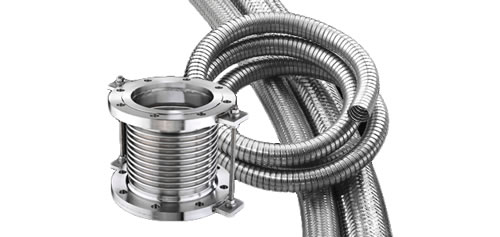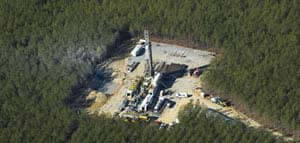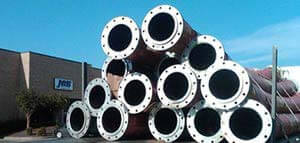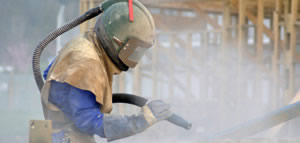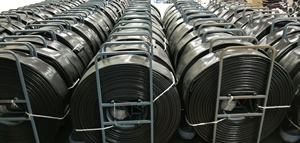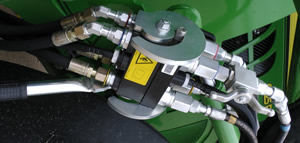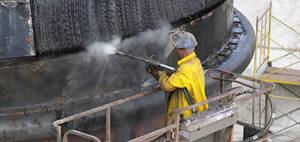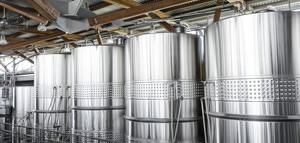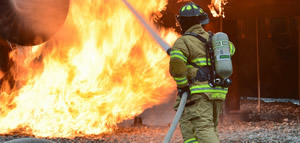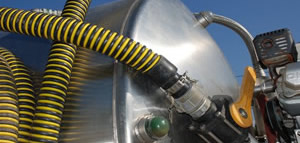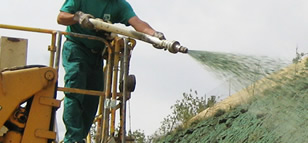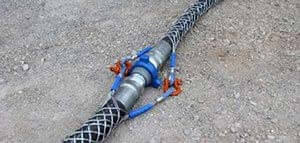Precautions in the use of Welding Hose
These and similar fuel gases may damage some grades or types of welding hose:
- APACHI
- FLAMEX
- MAPP
- PROPANE
- PROPYLENE
Use of the indicated or similar fuel gases at regulator settings above 40 psi may be particularly hazardous.
Users are also alerted against the use of ACETYLENE at any pressure above 15 psi.
In-Service Caution:
The user is first cautioned to shut off the gas at the torch and then at the regulator or supply source when the torch will not be used for periods in excess of 30 minutes, in order to limit permeation of gas through the hose wall.
The user is further cautioned not to shut off the fuel gas at the regulator or supply source first as a flashback may result and thereby damage the hose.
Adequate ventilation must be provided in confined areas where fuel gas is being used to prevent the accumulation or concentration of gas that could be explosive or otherwise harmful to personnel.
Background Information
The RMA/CGA specification for welding hose, as originally promulgated, considered welding hose that would be used to convey the then common fuel gas, acetylene, at the recommended low pressure (15 psi). Several grades were described, the variance between grades relating to a difference in their resistance to in the presence of oil, or to their resistance to destruction by flame, or both.
No differentiation was made for a variance in performance resulting from exposure to the fuel gas itself. It had been determined that acetylene, when conveyed under low pressures common to its recommended use, had little effect on the hose, regardless of its composition or construction.
In recent years, there have been developed or adopted a number of fuel gases
based on specific hydrocarbons or mixtures of hydrocarbons. It is known that
these special fuel gases have a different effect on rubber compounds than does
acetylene. The precise effect on all the many and varying hose compounds and
constructions of the many manufacturers has not been determined for all the
known special fuel gases.
The effect of any material being conveyed in a hose on the rubber compounds
used in the hose can be measured by one or several test procedures. In the
case of fuel gases, the test procedures most applicable would be designed to
measure a change of the physical properties after exposure to the fuel gas
including tensile, elongation, hardness and volume.
A characteristic of rubber hose that is significant in its use as welding hose is a phenomenon known as permeation. Any gas confined in the bore of a hose exhibits a tendency to pass through the tube wall and subsequently through the reinforcement and cover to the environment. Each gas has its own specific characteristic tendency to permeate.
Each rubber compound exhibits specific resistance to permeation. The rate of permeation increases with higher temperature. To minimize the permeation of fuel gas through the hose wall it is logical to design the tube compound for the lowest possible permeation rate. The problem in the case of welding hose results from the variety of gases now encountered,the varying pressures used in service, and the varying temperatures to be found in the work place.
The need to ventilate the workplace is evident, both for maintaining the lowest practical temperature and to dissipate the permeating gas, however slight, to prevent build up to concentrations that are either explosive or dangerous for breathing by workmen.
Some rubber compounds are known to have low permeation rates with several fuel gases but no specific rule can be laid down to predict overall performance. Thus, it becomes advisable to check the characteristic of each hose construction with each gas under actual or simulated service conditions to qualify it for use.
CAUTION:
Users of welding hose are urged to communicate their service conditions to the hose manufacturer and obtain the best recommendation of the manufacturer for a hose suitable for those conditions.
Thank you to Goodyear/Veyance Technologies Tire & Rubber company. Source material Goodyear/Veyance Technologies Catalog #99-130. Any errors in the transcription of this data are solely the responsibility of JGB Enterprises, Inc. No warranty, including implied warranty of merchantability, fitness for a particular purpose, or other warranty of quality is either expressed or implied of this product.

